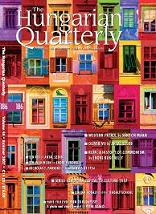“It is not a Kodály School, but it is Hungarian”- A Concept and its History
“It is not a Kodály School, but it is Hungarian” - A Concept and its History
Author(s): Anna DalosSubject(s): Music
Published by: Society of the Hungarian Quarterly
Keywords: Zoltán Kodály
Summary/Abstract: The phrase “Kodály school” was first used by Mátyás Seiber in a November 1926 article on Kodály as a teacher of composition: “Anyone trained in the ‘Kodály school’ can count himself lucky.” (The inverted commas indicate that the phrase was unusual.) What Seiber was referring to was not an artistic orientation but an institutional form directed by a particular individual. The expression cropped up again, about a year and a half later, in István Sonkoly’s review of Jenő Ádám’s Suite for orchestra: “[Ádám’s] composition displays all the virtues of the Kodály school. He writes concisely, favouring classical form, his orchestration is not overly dense, and he tends to treat the woodwind soloistically.” Again, “Kodály school” stands not for an orientation or trend, but for all that Ádám had absorbed in his studies under Kodály. During the 1920s and 1930s, the expression “Kodály school” is rarely used in the literature on music and exclusively in the context of education, as a reference to the totality of a composer’s academic work. This was the usage that prevailed for years, with Sonkoly employing it in this sense even in 1948: “Kodály, the composer and teacher, has founded a school” is a clear allusion to the students as a group, yet Sonkoly was concerned with how Kodály taught the craft of composition and not with the factors that united this group. As late as 1972, Bence Szabolcsi saw the feature most characterizing the Kodály school as the love of the craft of composition. [...]
Journal: The Hungarian Quarterly
- Issue Year: 2007
- Issue No: 186
- Page Range: 146-159
- Page Count: 14
- Language: English

